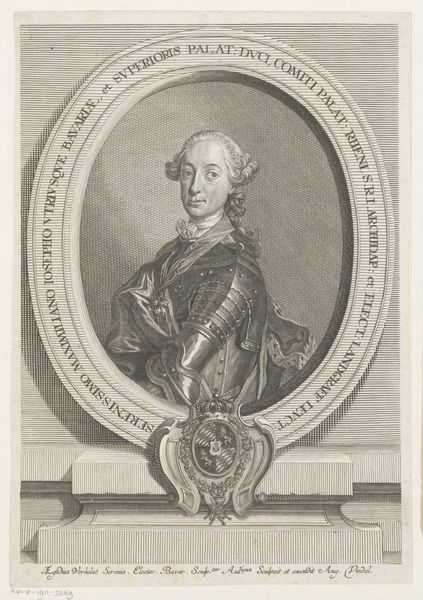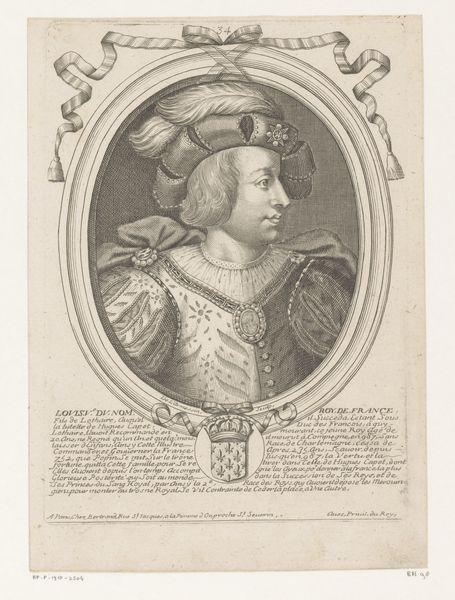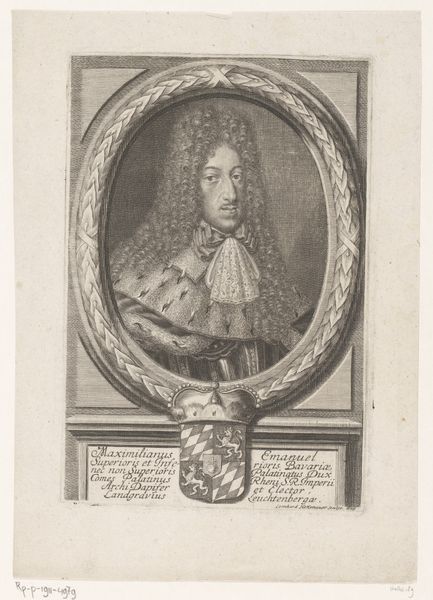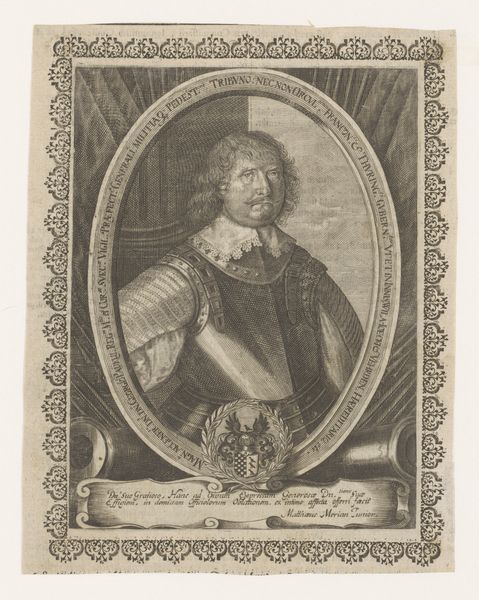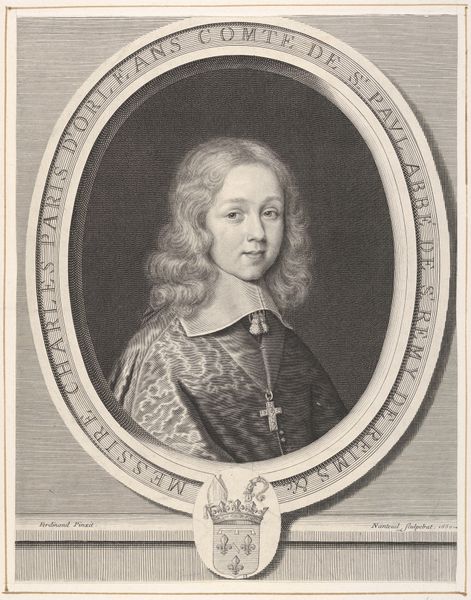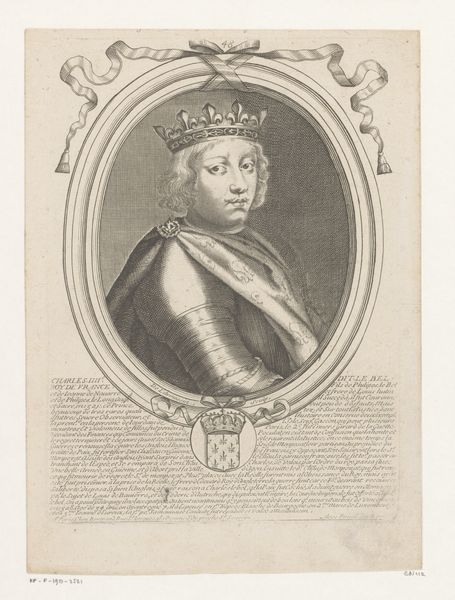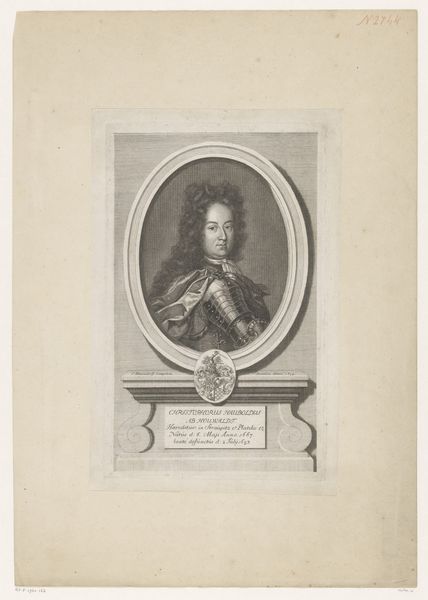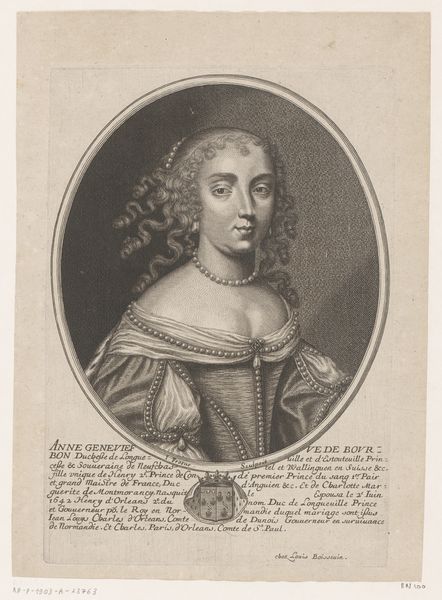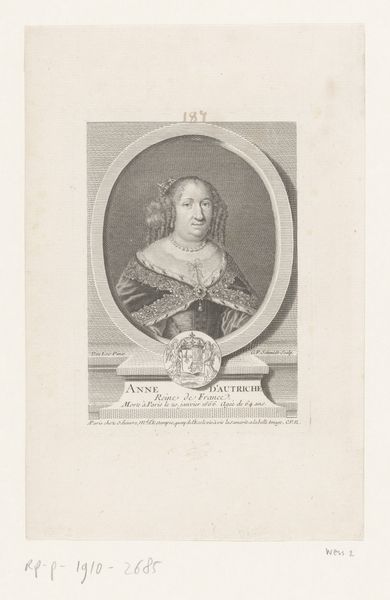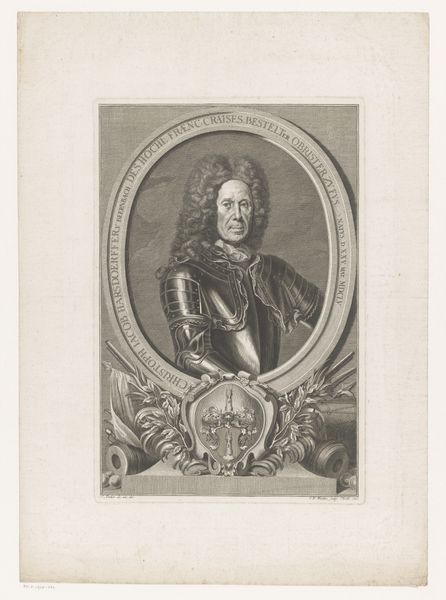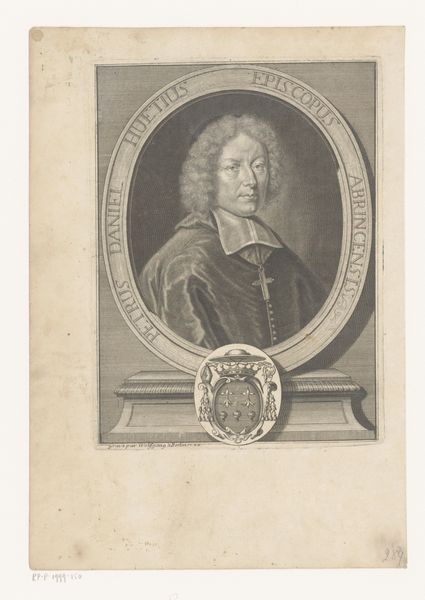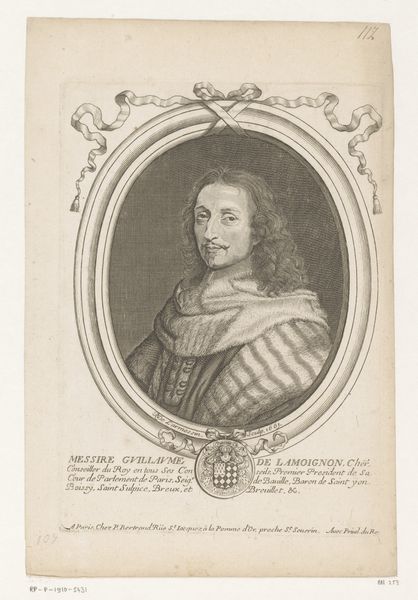
print, engraving
#
portrait
#
baroque
# print
#
old engraving style
#
portrait drawing
#
history-painting
#
engraving
Dimensions: height 345 mm, width 235 mm
Copyright: Rijks Museum: Open Domain
Curator: Welcome to this portrait of Vittoria della Rovere, Grand Duchess of Tuscany, rendered as a print dating to 1637. Editor: It possesses a rather somber formality, doesn't it? The stark contrast between the dark engraving and the white paper, and the subject's direct gaze...it evokes a sense of austere power. Curator: Indeed. Observe the precise linework; each line meticulously defines form and texture, from the intricate lace collar to the elaborate jewel adorning her chest. Note the balanced composition, the oval framing focusing attention on her face and upper torso. This structured clarity speaks to the formal conventions of Baroque portraiture. Editor: But what is the social context within which such formality gains meaning? Vittoria della Rovere's marriage consolidated power between influential families. Her jeweled adornment is not merely decoration but a claim to social rank within a violently stratified society. It signifies access, control and ultimately the capacity for cruelty to ensure her family remains in power. The dark ink underscores this as a symbol of her patriarchal rule and power. Curator: That's a valid interpretation. I, however, see an emphasis on form and technical execution. The way the engraver utilizes the hatching and cross-hatching to model light and shadow creates volume and depth within the relatively flat surface of the print. Semiotically, this represents an effort to represent three-dimensional reality on a two-dimensional plane. Editor: It's precisely the historical reality behind such an effort that intrigues me! The pressure to maintain alliances, produce heirs... How might Vittoria have felt confined by such constraints? Her neutral expression becomes a mask behind which countless untold narratives might hide. Curator: Perhaps, but we shouldn't overlook the aesthetic qualities—the visual balance, the harmonious arrangement of forms. These structural features are also rich with artistic intentions. Editor: And those intentions cannot be fully divorced from the complex power dynamics that permeate that period in history. Thank you for joining me. Curator: Thank you for accompanying me.
Comments
No comments
Be the first to comment and join the conversation on the ultimate creative platform.

